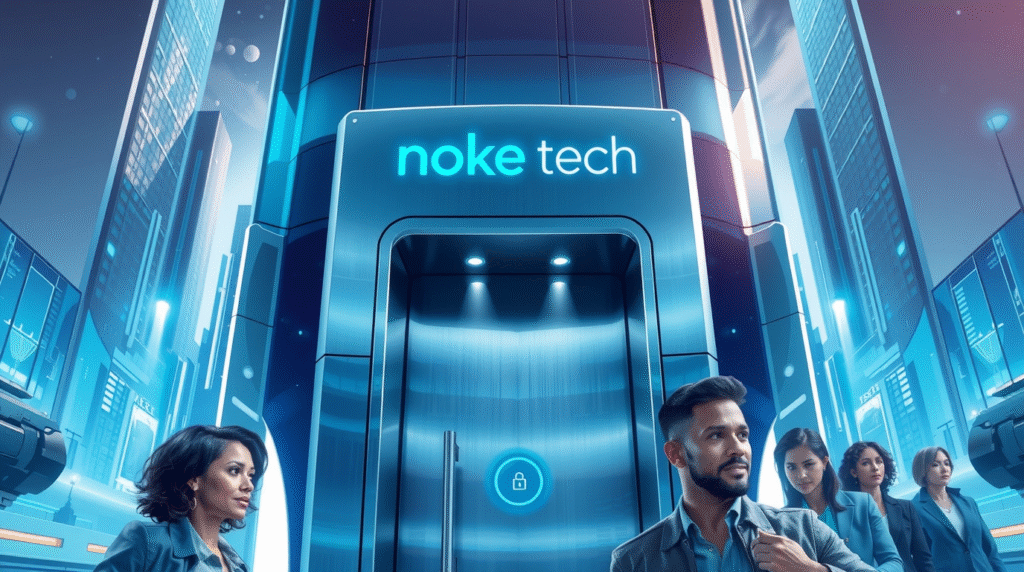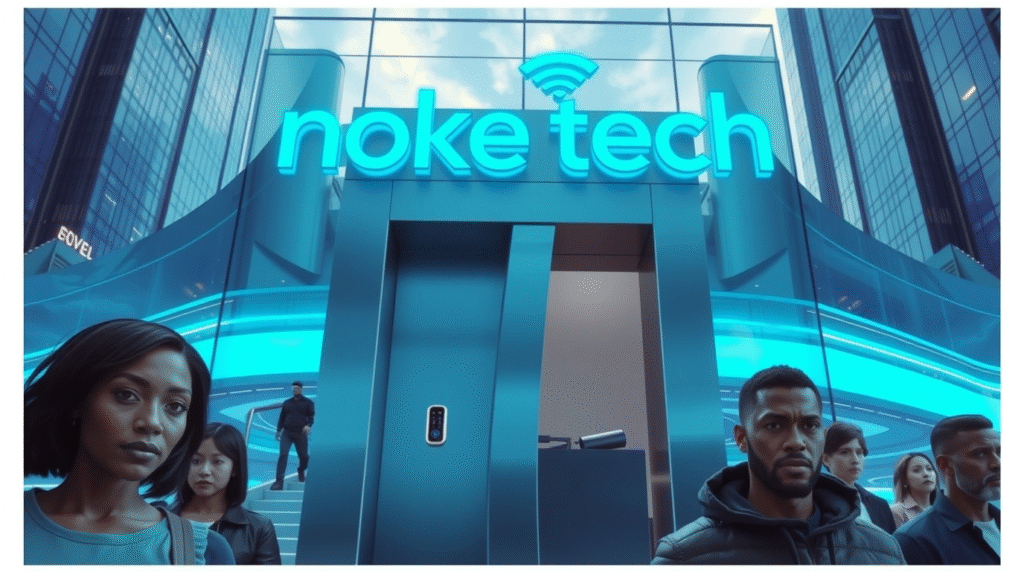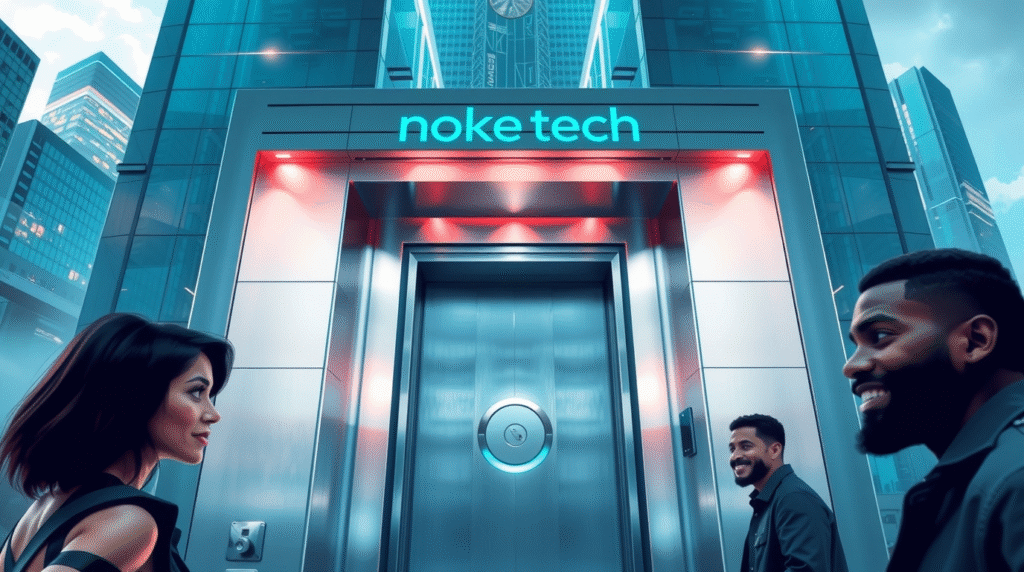In today’s fast-paced world, Noke Tech stands at the frontier of smart security. It merges convenience, reliability, and cutting-edge connectivity. Through seamless app control, Bluetooth integration, and advanced encryption, noke tech enhances safety while simplifying access. In this article, you’ll discover its benefits, architecture, real-world applications, and how to choose the right model.
What Is Noke Tech and How It Works
Noke tech refers to a smart lock ecosystem built around wireless access control. The system typically uses Bluetooth Low Energy (BLE) in your phone or paired token to unlock devices. Once authorized, the system verifies credentials, decrypts signals, and triggers the locking mechanism. Transitioning from traditional keys to mobile keys, noke tech brings flexibility, audit trails, and remote sharing.
Behind the scenes, noke tech integrates firmware, cloud synchronization, and mobile apps. The firmware inside the lock verifies cryptographic tokens. The cloud servers manage user permissions and logs. Meanwhile, the mobile app interfaces with users and sends commands. Every layer collaborates to deliver secure, user-friendly locking.

Core Features of Noke Tech
- Bluetooth and NFC pairing: Most noke tech locks pair automatically when in range.
- Access sharing: You may grant temporary or permanent access to friends and staff.
- Activity logs: The system records each unlocking event in real time.
- Remote control (cloud-enabled models): Some models permit remote locking/unlocking via Internet.
- Tamper alerts: The lock alerts you if someone forces entry.
These features create a strong value proposition. For instance, you can allow a visitor to unlock the door just during a set time window. Then the permission expires automatically.
Why Choose Noke Tech Over Traditional Locks
First, you avoid physical keys that may be lost or duplicated. In addition, noke tech provides digital control over who enters your space. Moreover, it elevates security by combining encryption, authentication, and notifications. Also, you benefit from visibility into usage patterns—for example, seeing when users unlock a door.
Additionally, noke tech improves convenience: you carry your smartphone or token, not a bulky key ring. You can revoke access instantly. You can share time-bound keys. Finally, modern noke tech locks integrate with smart home systems, allowing automation like “unlock when I arrive” or “lock at bedtime.”
Technical Architecture of Noke Tech
1. Hardware and Mechanism
At the core, noke tech uses a motor or solenoid mechanism to operate the latch or deadbolt. The hardware includes sensors for door position and battery monitoring. A microcontroller processes incoming signals from Bluetooth or NFC. Proper mechanical design ensures longevity and weather resistance.
2. Communication Layer
The communication layer relies on BLE or NFC between the user’s device and the lock. In cloud-enabled designs, the lock can connect to a bridge or Wi-Fi module to reach remote servers. Communication uses secure encryption (e.g. AES) and key exchange protocols. This protects against signal replay or man-in-the-middle attacks.
3. Cloud and Backend
The cloud backend stores user accounts, permission levels, and access logs. When you share a digital key, the request goes through the backend, which verifies identities and issues cryptographic tokens. The backend also sends notifications and pushes firmware updates to locks.
4. Mobile Application
The mobile app for noke tech acts as the user interface. It manages pairing, permission settings, and activity logs. It sends commands (lock/unlock) and receives responses or alerts. The app encrypts communication and stores local tokens securely.

Use Cases for Noke Tech
Residential Security
Homeowners use noke tech to give access to cleaners, neighbors, or family members. You can allow entrance only during specified hours. You receive notifications whenever someone enters. You eliminate worries about lost keys or hidden spares.
Shared Properties and Rentals
Airbnb hosts and rental owners benefit from noke tech by issuing unique keys per guest. After checkout, access revokes automatically. That makes managing multiple guests easier and more secure. It also offers logs that show which user entered and when.
Offices and Coworking Spaces
In an office environment, noke tech replaces keycards or fobs. Admins grant access per employee or per area. They track usage and revoke permissions instantly, for example in case of staff change. Integrations with timekeeping or security systems help automate workflows.
Fitness and Storage Facilities
Gyms or self-storage sites use noke tech to control access to lockers or units. Users unlock their assigned zone through their smartphone. The provider monitors usage and can remotely intervene if needed.
How to Choose the Right Noke Tech Model
- Connectivity Requirements
If you need remote access, pick a model that supports Wi-Fi or relay bridges. If local control suffices, a BLE-only model may suffice. - Mechanical Compatibility
Ensure the lock fits your door type—deadbolt, mortise, gate latch, or bike lock. - Battery Life and Power Backup
Choose models with long battery life and a method for emergency power (e.g., micro-USB override). - Security Certifications
Check for certifications like ANSI/BHMA ratings or UL marks. These give independent assurance of durability and safety. - Integration Options
If you use a smart home platform, make sure noke tech supports integrations (e.g. through IFTTT, Home Automation). - Support and Firmware Updates
A provider actively releasing patches and improvements contributes to long-term reliability.
Best Practices for Deployment
- Mount the lock on a secure door or frame.
- Keep firmware up to date to patch vulnerabilities.
- Use strong, unique passwords on your backend account.
- Enable multi-factor authentication for the management portal.
- Limit access permissions to only necessary users and times.
- Monitor alerts for tampering or failed attempts.
- Replace batteries before they fully deplete.
By following these practices, you maintain reliability and strengthen security for noke tech deployment.
Challenges and Considerations
- Wireless Range Limits: BLE may lose signal over thick walls.
- Dependency on Devices: If a user’s phone or token fails, access may be lost.
- Firmware Risks: Bugs or vulnerabilities may emerge if updates don’t arrive.
- Power Failure: Battery drain disables lock unless there’s emergency override.
- Cost: Smart locks cost more than traditional locks upfront.
You should weigh these factors during planning. For critical entrances, combine noke tech with conventional emergency override options.

Future Trends in Noke Tech
- Biometric integration: Fingerprint or face recognition may join BLE capabilities.
- Edge AI: On-device anomaly detection could flag suspicious behavior without cloud dependency.
- Blockchain-based access: Immutable access logs stored on decentralized ledgers enhance audit trust.
- Mesh networks: Locks may form local mesh to relay commands without Wi-Fi.
- Universal standards: Industry-wide protocols may ease interoperability between brands.
Such advances will push noke tech into broader adoption across homes, enterprises, and smart cities.
Conclusion
Noke tech offers a powerful, modern alternative to conventional locking systems. It delivers convenience, security, control, and adaptability. By understanding its architecture, use cases, and deployment guidelines, you can select and maintain a robust smart lock system. Don’t delay—upgrade your access controls today and experience next-level security.
Call to Action: Explore models that suit your needs now. Compare features, request demos, and adopt noke tech to future-proof your access system.
FAQs
1. Is noke tech safe from hacking?
Yes, when implemented correctly. The system relies on strong encryption, token-based authentication, and secure firmware updates. However, users must follow best practices such as using robust passwords and updating firmware regularly.
2. Can I share access using noke tech?
Absolutely. You can grant time-limited or permanent access to others. Permissions can be revoked instantly. This feature makes noke tech ideal for rentals or temporary visitors.
3. What happens if the phone battery dies?
Most noke tech locks include fallback options like mechanical keys or micro-USB power ports. You should plan for backup access in case device or battery failure occurs.
4. Does noke tech work offline?
Yes. Many models allow local BLE unlocking without Internet. Cloud features like remote access or logging require connectivity, but daily functionality remains available onboard.
5. How many users can one noke tech lock support?
It varies by model, but many support dozens or even hundreds of unique user profiles or keys. Always verify specifications with the manufacturer before deployment.

